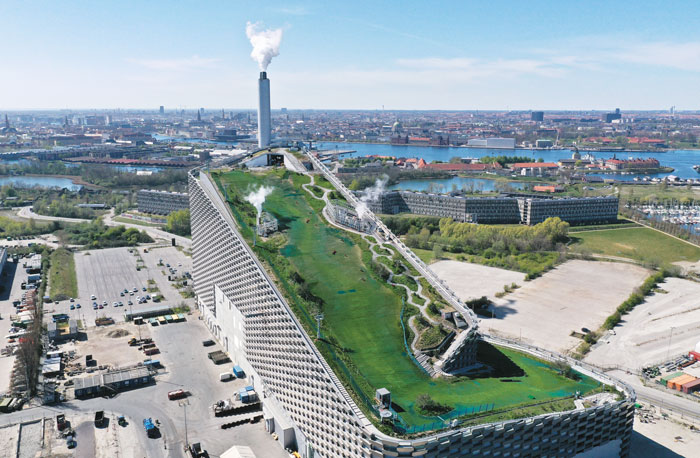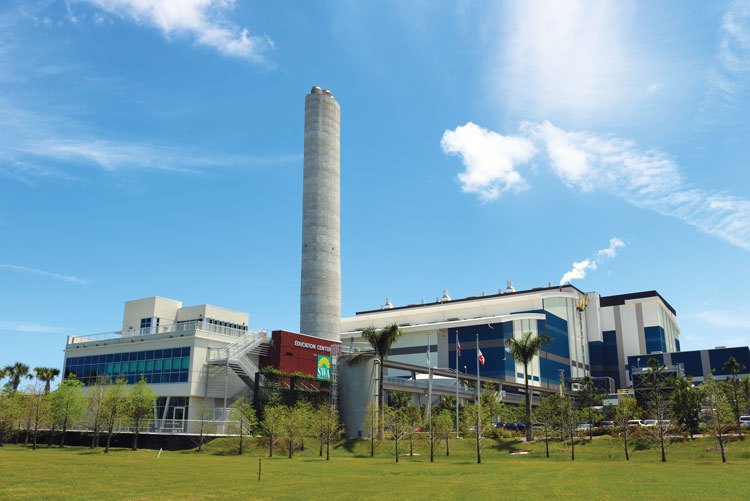With a thoughtful approach to waste management, well-designed legislation and a greater reliance on advanced waste-to-energy technologies, we can address landfill methane emissions in a responsible, sustainable and economically feasible way.
By Brandy Johnson
In the United Nations’ ‘Global Methane Assessment,’ published earlier this year, the U.N. makes a call to action that outlines the substantial impact human-caused methane emissions have on climate change and outlines potential near-term solutions to curb this powerful greenhouse gas and mitigate the effects of global warming.
The U.N.’s report is extremely relevant to the U.S. waste management industry, noting that landfills and wastewater account for 20 percent of human-made methane emissions, and that “existing targeted measures could reduce methane emissions from the waste sector by 29–36 Mt/year by 2030.”

Copenhagen, Denmark, sets new standards for environmental performance, energy efficiency and waste treatment capacity. It includes a roof-top ski slope and a hiking trail, with trees growing on landscaped sections. B&W supplied the plant’s boiler, combustion grate, environmental technologies and other equipment.
A Holistic View
It is becoming increasingly clear that organizations and governments are concerned about more than cutting CO2 emissions—they are also taking a more holistic view of the emissions and factors that contribute to climate change, and methane is in their sights. We
support government action to reduce methane emissions and believe industries—including the U.S. waste management sector—will need to move quickly to adapt to new rules and legislation. Waste-to-energy combustion technology is a proven, practical and economical solution to address the landfill methane problem.
Methane produced by decomposing landfill waste has a Global Warming Potential (GWP) 84 times more powerful than CO2 on a 20-year basis, and the size and scope of the landfill methane problem in the U.S. is staggering. There are more than 2,600 active and 3,200 inactive municipal landfills in the U.S., with only 548 of those landfills capturing the landfill gas. The remaining landfills emit more than 330 million tons of 20-year basis GWP each year, which is roughly equal to the emissions from 70 million cars. By diverting municipal solid waste to waste-to-energy facilities, the methane problem from new waste is eliminated and its global warming potential is reduced by 99.97 percent. Further, coupling waste-to-energy with carbon capture technologies could allow these facilities to have a net-negative impact on
greenhouse gas emissions (see Deploying WTE Combustion Technologies sideba).
Waste-to-Energy Facilities
As part of a comprehensive clean energy policy, the U.S. government should take steps to incentivize building new Waste-to-Energy (WTE) plants and reducing methane emissions from landfills by classifying waste-to-energy as a renewable-equivalent power generation technology, with investment and production tax credits similar to solar, wind and hydro power. Policymakers should also consider landfill taxes that reflect the GWP impact of methane emissions and/or incentives to states and municipalities to reduce landfilling and increase investment in WTE facilities, along with proportional carbon-credit or carbon-tax treatment for methane emissions based on 20-year GWP.
By offsetting the cost of building these facilities and treating WTE as the renewable clean energy source that it is, lawmakers could level the playing field, which is currently unfairly tipped in favor of other renewable technologies. Cost-effective, reliable and sustainable solid waste management systems that include WTE facilities would have the added benefit of creating many good-paying jobs for the communities where they operate, spurring economic growth and further justifying the cost of incentives.

waste-to-energy facility features three B&W boilers and a full suite of emissions control equipment, making it one of the cleanest renewable energy facilities in the U.S.
Action to Combat Climate Change
While pushback from U.S. landfill owners and operators is understandable and likely, we believe that action to combat climate change and to specifically address methane emissions from landfills, agriculture and gas and oil production is necessary and inevitable. According to the U.N. report, reducing human-caused methane emissions by 45 percent could prevent 255,000 premature deaths, reduce asthma-related hospital visits by 775,000, save 73 billion hours of lost labor time and prevent 26 million tons of crop losses globally each year. Our planet and future generations are depending on us to take action on methane today.
With a thoughtful approach to waste management, well-designed legislation and a greater reliance on advanced waste-to-energy technologies, we can address landfill methane emissions in a responsible, sustainable and economically feasible way. | WA
Deploying WTE Combustion Technologies
Combustion Technologies
Babcock & Wilcox provides two boiler options when using waste as a combustion fuel—mass-burn, which uses municipal solid waste in its as-received, unprepared state and refuse-derived fuel (RDF), in which municipal waste is first separated, classified and reclaimed in various ways to yield salable or otherwise recyclable products. The remaining material is prepared for thermal processing in the boiler. B&W’s
advanced design DynaGrate® reciprocating combustion grate, Vølund combustion grate and advanced overfire air systems provide environmental benefits during combustion by destroying dioxins and furans, minimizing formation of nitrogen oxides and carbon monoxide and minimizing unburned carbon. Heat
generated from combustion is used to create steam or hot water, which in turn either drives a turbine to produce power or is used for district heating.
Advanced emissions control systems including scrubbers and baghouses and even CO2 capture can be used to reduce pollutants. When coupled with CO2 capture technologies, a waste-to-energy plant becomes a carbon negative site—actually reducing carbon from the atmosphere. In both mass-burn and RDF plants, metal recovered from the ash is often recycled while the ash itself can be reused in road construction or other applications in circular economies.
Babcock & Wilcox has spent decades honing their advanced waste-to-energy combustion technologies, and these solutions are deployed in hundreds of facilities around the world. Copenhill in Copenhagen, Denmark, and the Palm Beach Renewable Energy Facility No. 2 in West Palm Beach, Fla., are two shining examples of B&W’s clean WTE technology at work. Copenhill, which opened in 2017, is integrated into the community, with a café and ski slope on top of the building. The West Palm Beach facility, which opened in 2015, is the cleanest and most-advanced WTE plant in the United States.
At both Copenhill and West Palm Beach, the plants generate clean energy and are complementary to local recycling programs, while dramatically reducing landfill reliance and eliminating landfill methane emissions by diverting the waste from landfills to the WTE plants. In Europe, regulations aimed at reducing or eliminating the amount of waste sent to landfills are largely responsible for driving demand for waste-to-energy plants, with hundreds of facilities currently in operation. The U.S. has only about 10 percent of the number of WTE plants as Europe because the space for landfills is more plentiful and inexpensive, environmental regulations are less stringent and is not yet as socially unacceptable to bury waste, despite the dangers it presents. Babcock & Wilcox believes that should change.
Brandy Johnson is Vice President of Global Engineering for Babcock & Wilcox (B&W), a leader in energy and environmental products and services for power and industrial markets worldwide. Brandy is responsible for managing the engineering execution of projects for the renewable, environmental and thermal businesses globally and for developing new products that customers will need in the future including the ClimateBright suite of technologies. Joining the company in 1995 as a field service engineer, Brandy’s previous B&W positions include serving as Vice President, Global Projects, Vice President, Global Project Development, Director, Supply Management, and Team Champion for the company’s Global Competitiveness Initiative. She also served as Project Manager, and Business Development Manager. She is a Registered Professional Engineer in the state of Ohio. Brandy can be reached at [email protected]. For more information, visit www.babcock.com/waste-to-energy.
References
www.unep.org/news-and-stories/press-release/global-assessment-urgent-steps-must-be-taken-reduce-methane
www.epa.gov/lmop/project-and-landfill-data-state
www.epa.gov/lmop/basic-information-about-landfill-gas
